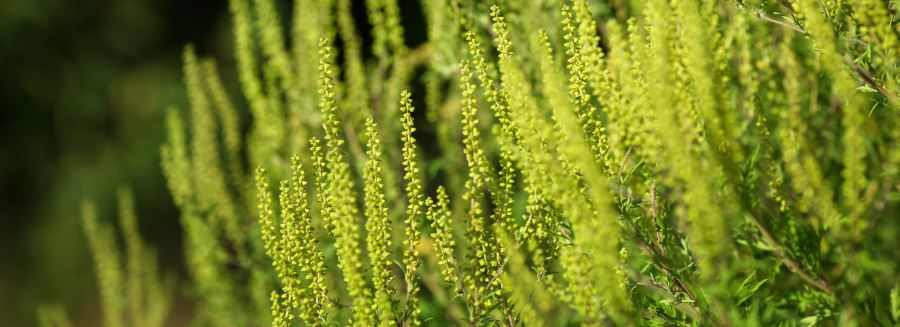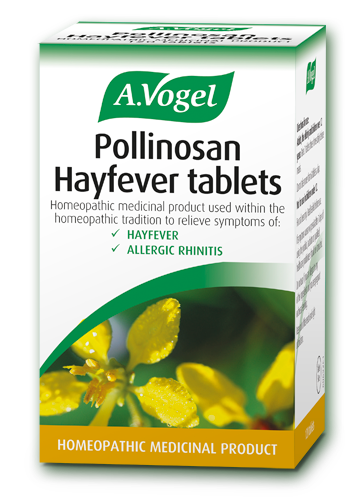Which hayfever remedy is best?
Take our quick 4 question test to find out which hayfever remedy is best for you
Take the test now!Hayfever is infamously a summer condition, characterised by sunny days spent inside with a snuffly nose and watery eyes. So why are you still getting symptoms when hayfever season is surely over? Today I’m talking about what can trigger hayfever symptoms from late August into September and October.
Most people assume that hayfever only coincides with the hottest months – June, July and August – but actually it can extend far beyond that, since there are so many different types of plants that can trigger hayfever symptoms, and each pollinates at different times.
The length of the hayfever season can also be partly due to the weather – climate change is causing generally warmer weather which can lead to hayfever season starting earlier and finishing later. However, annual fluctuations can also cause the hayfever season to drag on – things like the movement of the Gulf Stream, wind direction, storms (even those as far away as the US) or natural weather patterns.
However, there are a number of plants that can still pollinate long after the summer months, regardless of how hot the weather has been! Let’s take a look at what the cause of your hayfever could be during the different out-of-season months.
Unfortunately you’re not free from grass pollen just yet! While grass pollen peaks in June and July, its usual pollen season extends into August too.
While trees tend to trigger early hayfever symptoms, weeds are often responsible for late hayfever symptoms. Mugwort, Nettle and Plantain can often still be releasing pollen into late August and even September.

Ragweed is an infamous allergen in North America and it is beginning to make an appearance in Europe and the UK now too. Exactly how many people are sensitive to this type of pollen is unclear – research suggests anything between 10 and 45% of the population.
A single Ragweed plant can produce up to a billion grains of pollen each season – its making me sneeze just thinking about it! What’s worse is that it is also particularly potent; just 1-3 grains of ragweed pollen per m3 of air will result in symptoms, compared to the 50 grains of grass pollen or 80 grains of birch pollen it usually takes to trigger symptoms1.
This weed pollinates between August and October, which could explain your delayed hayfever symptoms. The presence of Ragweed depends on a few factors such as weather – it is native to the warmer climates of North America so does not generally survive very cold winters. It is also not widespread in the UK, so your reaction to it will depend on how much is in your local area.
You may not be allergic to a plant at all, but instead allergic to certain mould spores! Mould allergies are most common in early autumn and late spring, so if you’re experiencing symptoms in September this could be the culprit.
If you have a mould allergy you will likely experience worse symptoms indoors than outdoors, as this is where most mould is found. You’ll also probably notice worse symptoms in old or damp buildings.
To combat this, make sure to keep your home well aired by opening windows regularly. Dry clothes outside where you can, and install dehumidifiers in your dampest rooms, as well as in wardrobes and cupboards. You can buy cheap non-electric versions in most home-stores or pound shops, which contain silica gel pellets that absorb moisture from the air.
If your symptoms last beyond October and into winter then it’s safe to assume that something other than hayfever is at work.
Allergic rhinitis is the term we use to describe an allergy that affects the respiratory system – hayfever is just one type, but many people are sensitive to a range of allergens. There are a great number of common allergens, so it’s hard to say exactly what could be causing your reaction!
Mould could still be a problem in the winter, particularly if you start drying clothes inside rather than outside, and don’t open windows enough to allow fresh air to circulate.
Another common culprit is a dust or dust mite allergy and this can get worse in the winter when you turn the central heating on, as the dust that has been collecting there over summer suddenly gets pumped back into the air. Not opening windows enough means that this dust then becomes trapped in your home.

Other common allergens include pet dander, which again can worsen in the winter due to a lack of air circulation.
Luckily, our Pollinosan tablets work for both hayfever and allergic rhinitis, so they should help to ease your symptoms regardless of the cause.
The simplest way to determine what you’re allergic to is by an allergy test. Contact your GP to discuss if an allergy test is necessary, but bear in mind that they are not always 100% accurate.
Alternatively, you can keep an eye on the pollen count for your area to see what is pollinating around the time that your hayfever symptoms are triggering. Our own pollen forecast breaks the pollen counts down into grass, nettle and 5 different types of tree so you can see exactly what type of pollen is in the air that day. Find your nearest local pollen count here.
1) Ragweed pollen: is climate change creating a new aeroallergen problem in the UK? 17 June 2015
 Looking for relief of red and itchy eyes due to hayfever?
Looking for relief of red and itchy eyes due to hayfever?
A.Vogel Pollinosan Hayfever Eye Drops contain hyaluronic acid (from vegetable source) and can be used for quick relief of red and itchy eyes due to hayfever. Suitable for contact lense users.
To find local independent stores in your area that sell A.Vogel Pollinosan Hayfever Eye drops, simply type your postcode below.

Take our quick 4 question test to find out which hayfever remedy is best for you
Take the test now!Stay up to date with the latest pollen information by finding your local pollen forecast from over 30,000 locations across the UK.
Get your local pollen count nowWhat you eat can have a dramatic effect on your hayfever symptoms. While anti-inflammatory and natural anti-histamine foods can help control your symptoms, foods containing dairy and foods rich in sugar can actually make them worse.
7 simple hayfever nutrition tipsDiscover the story of Alfred VogelNature is just about the best thing we’ve got!